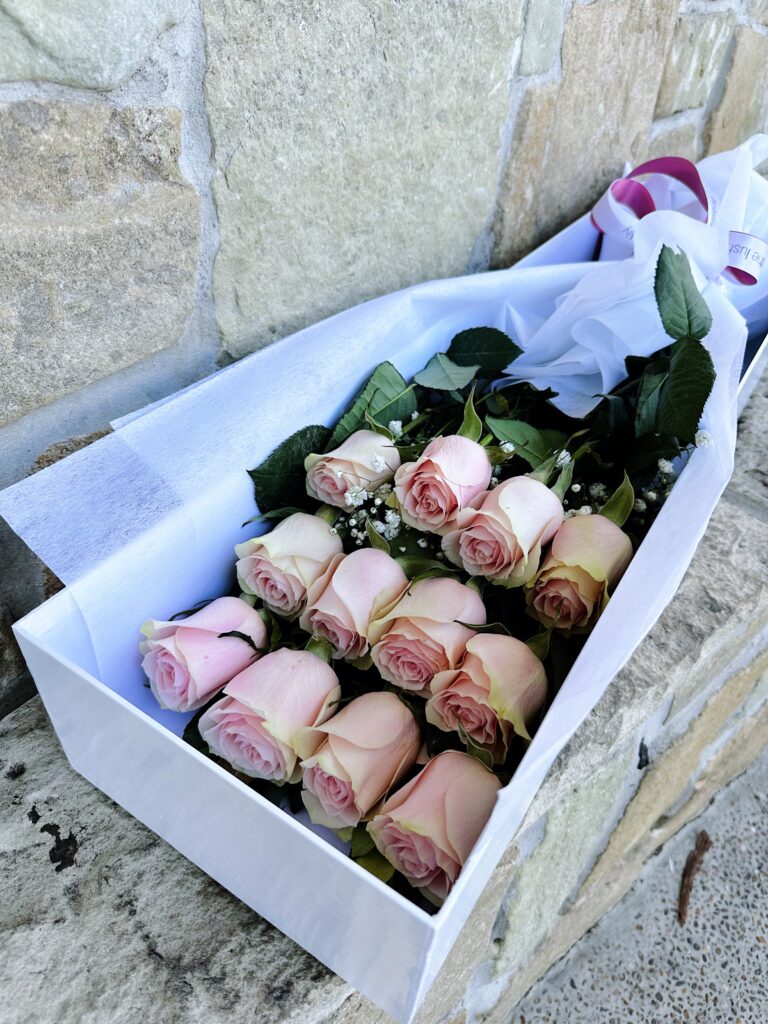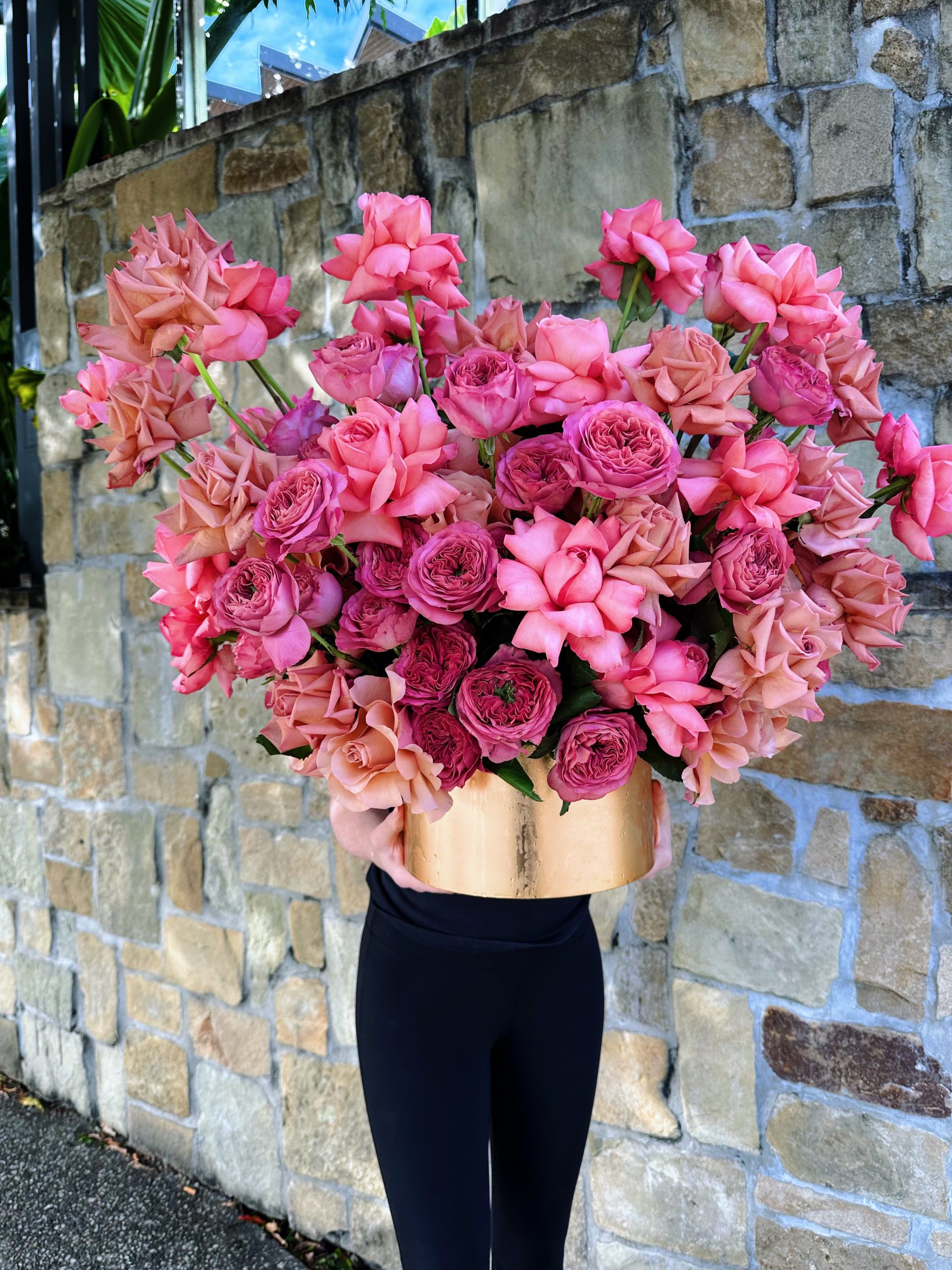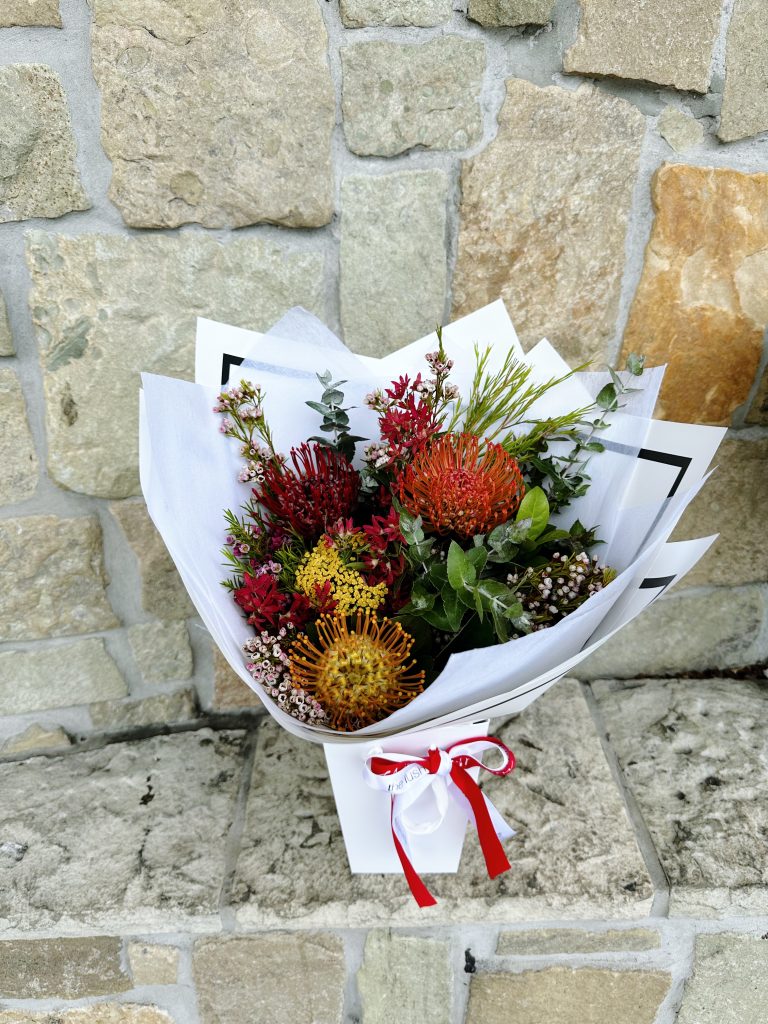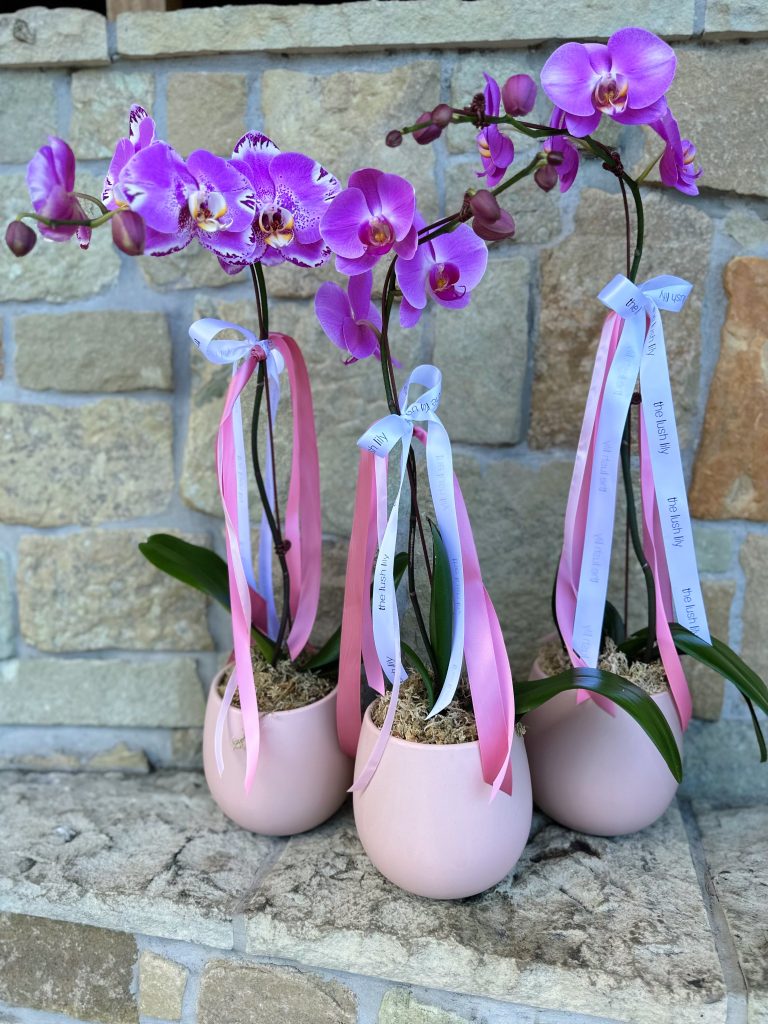Brisbane's Favourite Florist, Delivering as far as the Gold Coast. Shop Online Today!
We believe your flowers deserve to look their best for as long as possible. With just a little care and attention, you can enjoy the beauty of your blooms well beyond delivery day. Below is a few simple tips to help you keep your arrangements fresh, vibrant, and full of life — just as nature intended.
Always cut 1–2cm from the bottom of each stem before placing your flowers in water. Be sure to cut at a sharp angle — this increases the surface area for water uptake and helps your blooms stay hydrated for longer.
Place your bouquet in a clean, upright container (preferably glass) filled with fresh, room-temperature water. This provides a nourishing base and helps prevent bacteria from forming too quickly.
Any leaves sitting beneath the water line should be removed, as they can rot and create bacteria in the water, which shortens the lifespan of your flowers.
If your arrangement includes floral foam, ensure it stays saturated at all times. Our floral foam is pre-treated with flower food to support the health and longevity of your blooms.
Flowers last longer when kept at room temperature (18–22°C) and away from direct sunlight, heating or cooling vents, ceiling fans, or draughty areas. These conditions can cause your flowers to wilt more quickly.
Avoid placing flowers on top of microwaves, televisions, or other heat-emitting appliances, as they radiate warmth that can lead to dehydration and shorten bloom life.
Ripening fruit such as bananas and apples emit ethylene gas — a natural compound that speeds up the ageing process of flowers. Keep your arrangements away from fruit bowls to preserve their freshness.
Every 2–3 days, remove your flowers from the vase, trim the stems again on a slight angle, and thoroughly clean the container before refilling it with fresh water.
Extreme cold or heat can negatively affect flowers. Keep them in a cool, shaded spot inside your home — this will help extend their vase life and maintain their beauty.
Roses can be particularly sensitive. If they start to droop, try re-cutting the stems and placing them in tepid water. With proper care — including daily water changes and correct positioning — they can last between 3 to 5 days or even longer.
To make the most of your tulips, display them in a cool, shaded spot and consider adding a few ice cubes to their water — they thrive in colder temperatures and this little trick can help extend their life.
Some flowers will naturally fade before others. Gently remove any wilted or spent blooms to keep the remaining arrangement looking fresh and to prevent bacterial spread.
We take great care in ensuring your flowers arrive in perfect condition. Some flowers are delivered in bud form or with protective petals intact to preserve their beauty during transit. This thoughtful approach not only safeguards delicate blooms like lilies and roses but also gives your recipient the joy of watching their arrangement blossom naturally over time. Below, you’ll find helpful information about how certain flowers are prepared and delivered for maximum freshness and longevity.
Lilies are commonly delivered in bud form to protect the flowers in transit as their petals are very easily bruised. By being delivered in this fresh bud form, it will also allow the bouquet or arrangement a much longer life span with the recipient being able to watch as the flowers bloom over the days after the delivery.
If it is a requirement for the buds to be in bloom, the process of opening the blooms can be sped up by placing the lilies in a warmer room environment.
Lily pollen can stain clothing and furniture, so carefully remove the anthers (the orange pollen-coated tips at the end of the stamens) as each of the heads bloom, ensuring to handle the flower heads delicately so as not to bruise the petals.
Lilies can be toxic to cats.
Roses may be delivered with the outer petals, known as ‘guard’ or ‘protective’ petals still attached. These outer petals can appear to be dark tipped or bruised, have charred edges or a wilted appearance. The petals are kept on by the farmers and florists to protect the inner rose in transportation.
On arrival, remove the outer petals carefully as this will allow the inner rose to bloom.
Tulips can continue to grow even after being cut with the stems sometimes extending as much as an extra 3-4cm. The tulip heads will also lean towards any dominant source of light which may cause a ‘drooping’ of the flower head. Due to this, carefully arranged bouquets can disassemble themselves into something quite different. The flowers head will also open wide in bright light, sometimes exaggerating the drooping effect, although they usually close again at night if the room temperature is moderate to cool.




Same Day Delivery • Orders Placed Before 12pm • Brisbane Florist • Flower Delivery • Premium Blooms • Glasshouse Fragrances • Bouquets • Seasonal Flowers • Afterpay Available • Fresh Roses Daily • Local Delivery • Carindale Florist • The Lush Lily • Loganlea Florist • Order Flowers Online • Flower Delivery • Order Flowers Online •
Same Day Delivery • Orders Placed Before 12pm • Brisbane Florist • Flower Delivery • Premium Blooms • Glasshouse Fragrances • Bouquets • Seasonal Flowers • Afterpay Available • Fresh Roses Daily • Local Delivery • Carindale Florist • The Lush Lily • Loganlea Florist • Order Flowers Online • Flower Delivery • Order Flowers Online •